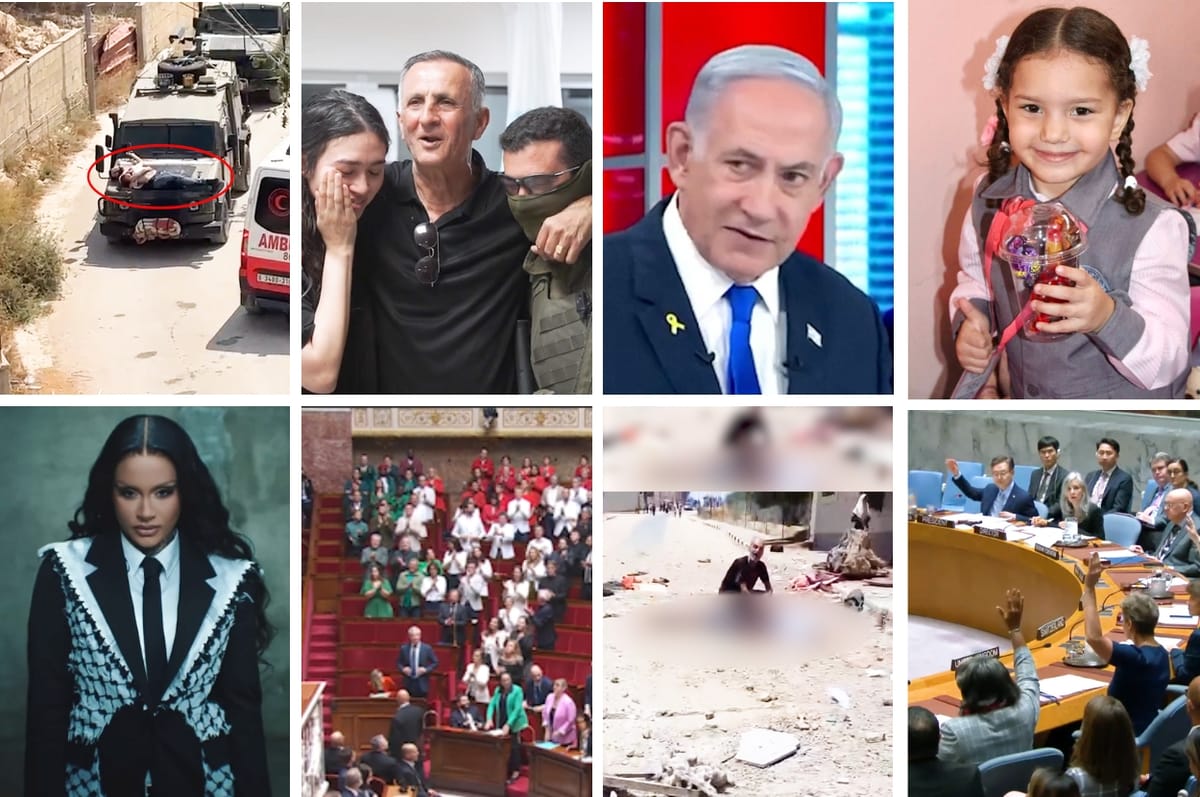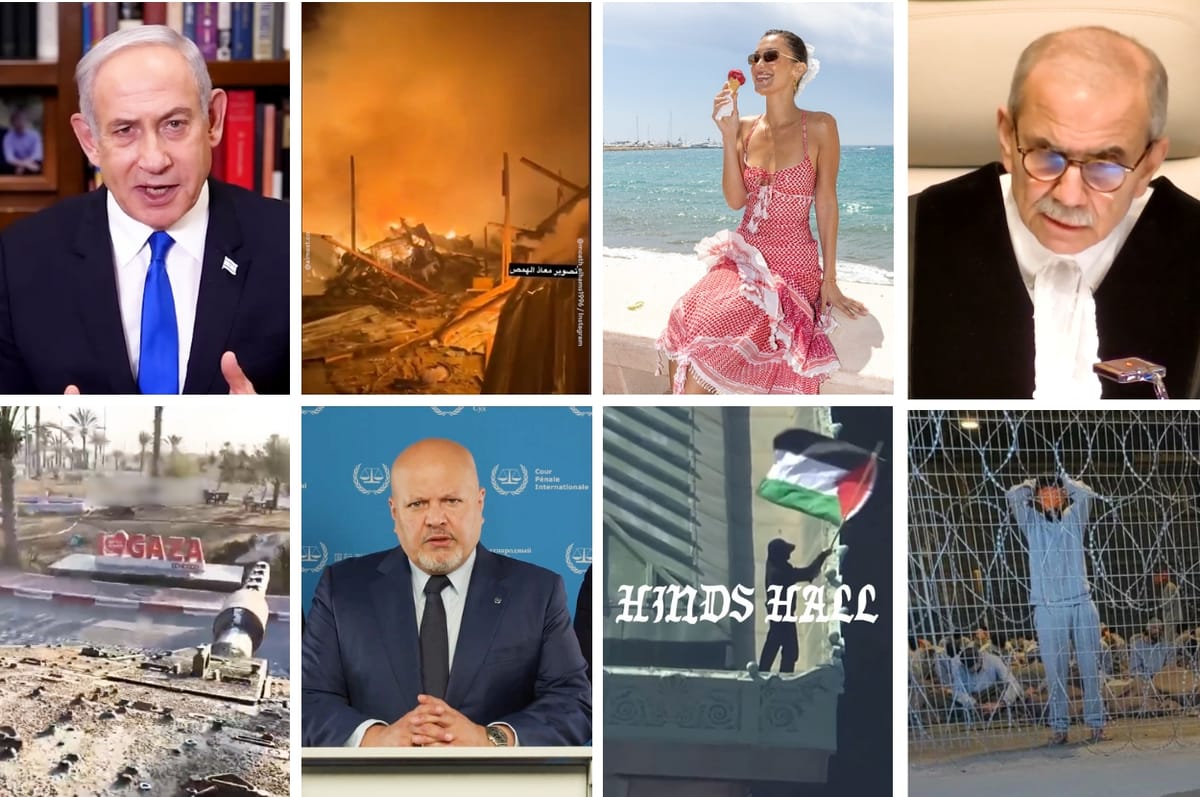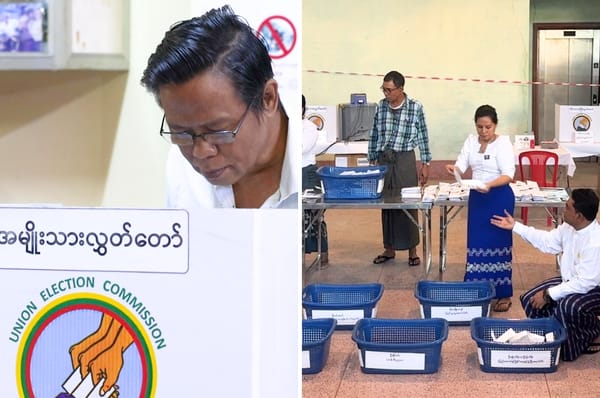Here’s What Happened During Israel’s Genocide In Gaza In June 2024
Take a look back at some of the updates on Israel's genocide on Gaza in May 2024.

Take a look back at some of the updates on Israel's genocide on Gaza in May 2024.
1. Israel massacred 274 Palestinians to retrieve 4 hostages it could have freed from the multiple ceasefire deals it rejected
In one of its worst attacks, Israeli forces massacred more than 274 Palestinians and injured at least 698 others in a refugee camp in Gaza in order to retrieve four hostages it could have freed through the multiple ceasefire deals it rejected since Oct. 7.
Members of the Israeli army disguised themselves as humanitarian relief workers and entered the Nuseirat refugee camp on a fake humanitarian aid truck on Saturday, May 8, as part of its “rescue” operation, according to exclusive footage obtained by Al Jazeera
The Israeli military attacked the camp via air, land and sea for over two hours, killing 274 Palestinians, including 64 children and 57 women, and leaving the bodies of Palestinians, including children, scattered in pieces in order to return four hostages.
At least 698 Palestinians were injured in the bloodbath, with the injured being moved to Al Aqsa Martyrs Hospital, which became overwhelmed.
The US supported Israel in the operation, a US official told Axios, while the New York Times reported that the US provided “intelligence and other logistical support”.
The Israeli military named the four hostages as Noa Argamani, 26, Almog Meir Jan, 22, Andrey Kozlov, 27 and Shlomi Ziv, 41 who had been taken from the Nova music festival during the attack by Palestinian group Hamas led in southern Israel on Oct. 7.
The four were in “good medical condition” and were taken to a hospital for medical checks following the Israeli military operation.
2. The US presented a deal for a permanent ceasefire that it said Israel had agreed to and was endorsed by the UN Security Council
On Monday, June 10, the United Nations Security Council (UNSC) adopted a resolution drafted by the US to call for an immediate and permanent ceasefire in Gaza, with 14 votes in favor, and Russia abstaining.
The UN resolution supports a three-phase proposal announced by US president Joe Biden on May 31.
The first phase calls for an immediate six-week ceasefire, during which Israeli forces would withdraw from populated areas in Gaza, Palestinian civilians would return to their homes and up to 600 trucks of humanitarian aid entering Gaza every day.
During this period, Hamas would release some Israeli hostages in exchange for Israel freeing Palestinians held in its prisons.
The resolution clearly states that if negotiations in phase one extend beyond the six weeks, the ceasefire will remain in effect as long as discussions continue.
Phase two would include a permanent ceasefire, Israel’s complete withdrawal from Gaza and Hamas releasing all the remaining hostages.
Phase three would focus on a multi-year plan to rebuild Gaza, returning the remains of any dead hostages back to Israel and taking steps towards a two-state solution for Israel and Palestine.
Speaking after the vote, the US’ UN representative Linda Thomas-Greenfield said that the UNSC had “sent a clear message to Hamas to accept the deal”, adding that Israel had already accepted it.
A senior Hamas official later told Reuters that the group had accepted the resolution for the ceasefire and was ready to negotiate over the details.
3. Israeli prime minister Benjamin Netanyahu later rejected the deal, saying he would only accept a “partial” deal to free some of the hostages
Israeli prime minister Benjamin Netanyahu then rejected the deal for a permanent ceasefire in Gaza that was presented by the US.
Appearing on an interview on Sunday, June 23, on Israel's Channel 14 TV – his first Israeli media interview since Oct. 7 – Netanyahu said that it was "no secret" that he would agree to a "partial deal" that would secure the return of some of Israel's hostages, but the country was committed to continuing the war after the deal to "complete its mission."
"If there is an agreement, it will be an agreement according to our terms, and our terms are not to end the war, to leave Gaza, to leave Hamas as it is," he said.
"I refuse to leave Hamas as it is. We need to eliminate it," he added.
Netanyahu's comments stand in stark contrast to those of US president Joe Biden, who announced at the end of May that Israel had accepted a three-phrase deal for a permanent ceasefire which it had put forward itself.
4. This Israeli minister resigned from the war cabinet over Netanyahu’s failure to manage the war on Gaza
Israeli minister Benny Gantz announced his resignation from prime minister Benjamin Netanyahu's emergency war government over Netanyahu’s post-war plan for Gaza.
On Sunday, June 9, Gantz, the former chief of staff of the Israeli military and the leader of the centrist National Unity party, resigned from Israel’s war cabinet, stating it was because Netanyahu had failed to present a concrete plan for how the Gaza Strip would be governed after the war.
"Regrettably, Netanyahu is preventing us from advancing toward true victory, which is the justification for the ongoing and painful cost [of war]. That is why we are leaving the emergency government today, with a heavy heart but with full confidence," Gantz said.
He said Netanyahu was procrastinating on fateful strategic decisions for his own political gain and called on Netanyahu to set a date for an election, saying “Do not let our people be torn apart.”
5. Israeli forces tied an injured Palestinian man on a military vehicle and used him as a human shield
Israeli forces have been filmed using a wounded Palestinian man as a human shield by tying him to the hood of a military vehicle during a raid in the occupied West Bank.
A video shared on social media and verified by multiple news outlets showed an injured Palestinian man, identified as Mujahed Azmi, strapped to the hood of a military jeep during an Israeli raid in Jenin city in the occupied West Bank on June 22.
Azmi’s family said Azmi had been injured during the raid, but when they asked for an ambulance, the Israeli military instead took him, strapped him to the car and drove off, according to Reuters.
The Israeli military said in a statement that it had been fired at so it exchanged fire, wounding a suspect and arresting him.
"The suspect was taken by the forces while tied on top of a vehicle," the statement said.
It added that the "conduct of the forces in the video of the incident does not conform to the values" of the Israeli military and that the incident will be investigated and dealt with.
6. More than 20,000 Palestinian children are estimated to be buried under the rubble or missing in Gaza, according to a new report from Save the Children
Nowhere is safe for children in Gaza.
A new report from Save the Children has found that more than 20,000 Palestinian children are estimated to be buried under the rubble or missing in Gaza.
The report found that at least 17,000 children are unaccompanied or separated from their parents or a guardians, approximately 4,000 children are likely missing under the rubble, with an unknown number in mass graves.
UN experts say that children are among those recently found in mass graves, with many showing signs of torture and execution, as well as potential instances of people buried alive.
Israel’s genocide in Gaza has now killed more than 14,000 children in Gaza since Oct. 7, with about half of them yet to be fully identified, partially due to their bodies being harmed beyond recognition, according to the Palestinian ministry of health in Gaza.
In fact, children make up about 40% of the people who have been killed in Gaza since Oct. 7, according to the UN.
In addition, about 250 Palestinian children from the West Bank are missing in the Israeli military detention system as of June 9.
7. A new investigation revealed that the Israeli military knowingly shot at six-year-old Palestinian girl Hind 355 times
A new investigation has revealed that Israeli forces fired 355 bullets at the car containing six-year-old Palestinian girl, Hind Rajab.
An investigation conducted by research group Forensic Architecture alongside Earshot and journalists from Al Jazeera’s Fault Lines on June 21 found that Israeli tanks had fired at Hind’s family car, knowing they were inside it.
A total of 64 gunshots ired in just six seconds can be heard in the final moments of the emergency call Hind's cousin Layan made to the Palestinian Red Crescent ,according to an analysis of the recording by Earshot.
The investigation found that the range of rounds per minute is consistent with weapons issued by the Israeli army.
The investigation indicated that the Israeli tank had to be positioned within a close range of 13 to 23 meters of the car when it fired the shots that killed Layan.
8. Kehlani released a powerful song dedicated to the 15,000 Palestinian children killed by Israel
Grammy-winning American singer and songwriter Kehlani has released a new pro-Palestine song titled “Next 2 U,” condemning Israel’s ongoing genocide in Gaza and standing in support of thousands of Palestinian children killed by Israel.
The R&B artist, who has been vocal about the genocide in Gaza since Oct. 7, released the new track on Friday, May 31, which follows closely on the heels of Macklemore’s viral song “Hind’s Hall,” in which he denounced Israel’s actions in Gaza and the US’ complicity in the genocide.
The singer, while announcing the release of the song in a post on Instagram, quoted American author Toni Cade Bambara, writing, “The role of the artist is to make the revolution irresistible.”
Kehlani said that as an artist, they had been nervous and terrified about losing so much of what they had worked so hard on and valued for an album to their humanity, paired with “the crippling wonder of what music is appropriate to drop during the most historical tragedies of our generation.”
“i listened to this song enough to recognize a love song IS a protectors song IS revolution,” they wrote.
The music video ends with a message, “We tried to make a scroll honoring the names of thousands of deceased children. The list was so long that our fastest scroll at 3 minutes was illegible."
9. After the French parliament banned the Palestinian flag, politicians dressed up in the flag’s colors to show their support for Gaza
In a show of solidarity with the Palestinian cause, French opposition politicians dressed up in clothing in the colors of the Palestinian flag during a session at the National Assembly on Tuesday, June 4.
The left-wing politicians collectively formed the Palestinian flag by each wearing a different color – green, black, red and white.
The act came after the French National Assembly prohibited raising the Palestinian flag inside the assembly building.
10. The World Record Egg came out in support of Palestine and urged its followers to break the record for Gaza
The "World Record Egg" has come out in support of Palestine, using its platform to raise awareness about Israel’s ongoing genocide in Gaza.
The egg, which once held the record for the most-liked post on Instagram, is now challenging its followers to break the record again and support the Palestinian cause.
Shared on June 3, the egg’s latest post features a photo of the egg itself emblazoned with the Palestinian flag, with the caption "Let’s set a new world record together and get the most liked post on Instagram for a good cause. Beating the current world record held by Leo Messi (70 Million)! Egg for Peace #EggGang."
More On Israel's Genocide In Gaza








